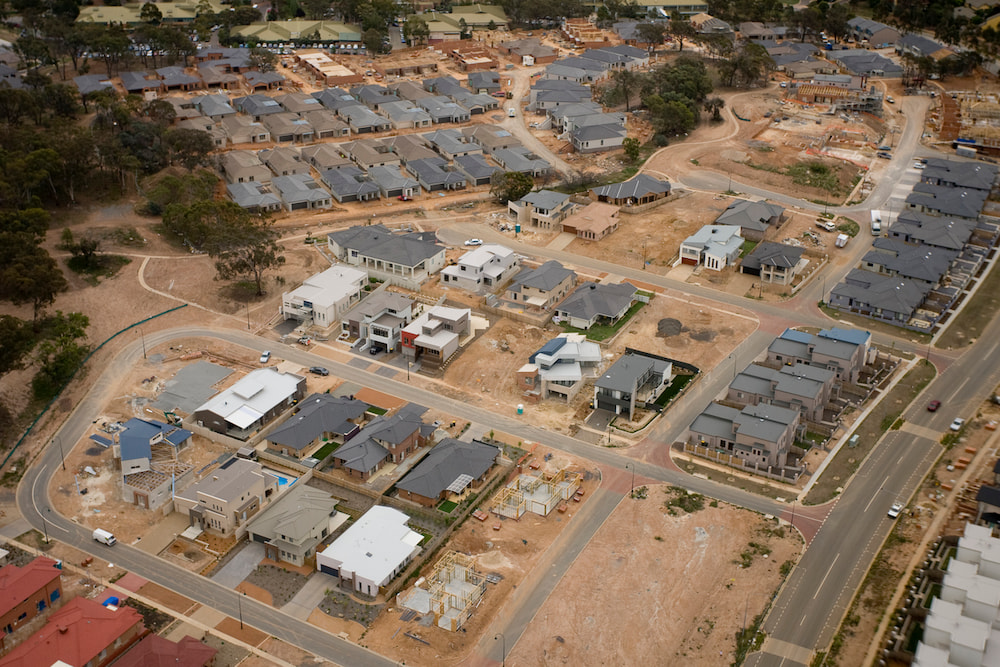The ACT Government’s new Territory Plan is a “missed opportunity” to address housing and environmental crises, believes ACT Greens MLA Jo Clay, chair of a Legislative Assembly inquiry into the new legislation.
The Territory Plan was a reform under the Planning Act 2023. It outlines what development can take place and where; guides developers; and gives the Territory Planning Authority the tools to approve or refuse applications for development. It aims “to ensure … that the planning and development of the ACT provides the people of the ACT with an attractive, safe and efficient environment in which to live, work and have their recreation”.
The Legislative Assembly’s Standing Committee on Planning, Transport and City Services began an inquiry into the Territory Plan in September, and published their report last Friday.
It made 30 recommendations, including allowing more zoning changes in Residential Zone One; allowing higher densities in specific locations; encouraging community housing on underused land; and protecting biodiversity and conservation areas.
Ms Clay, the ACT Greens’ spokeswoman for planning, believes the Government should have gone further and faster to boost housing in existing suburbs.
“Everyone needs a home. But we can’t sprawl endlessly into our precious habitat. We need to prioritise high-quality density with ample green space to build a truly liveable Canberra.
“The new Territory Plan does not give Canberra the reform we need to look after our people and our planet. The Greens want further zoning changes so we can build more homes, especially public and affordable homes. We need these homes in places Canberrans want to live, not on ever-increasing outskirts.”
In an appendix, Ms Clay recommended setting city limits and upzoning to ensure existing suburbs are densely populated. The Territory Plan should permit residential development in RZ1 zones consistent with the requirements for multi-unit housing in RZ2 zones with a maximum height limit of two storeys. Zoning in the Territory Plan should also be reviewed to facilitate affordable, public, and community housing on existing blocks being redeveloped.
“Mature cities set city limits,” Ms Clay said. “Canberra is already the size of Sydney and Greater London. It’s time to stop the sprawl.
“Good homes need access to essential services like schools, parks, and active and public transport. Canberrans don’t want to spend more of their days stuck in traffic on long commutes. They should be able to walk, ride or catch accessible public transport to work and school.
“Zoning system changes in our existing city footprint would allow for more Canberrans to live where there are already shops, public transport and community facilities,” Ms Clay said.
Under the new Territory Plan, Residential Zone 1 (RZ1) blocks greater than 800 square metres will be able to have a secondary dwelling up to 120 square metres in size. Canberra Liberals MLA Mark Parton, Shadow Minister for Housing and Homelessness and for Sustainable Building and Construction, recommended that the government revise its RZ1 policy for developing parcels of 800 square metres or larger to include an option for separate titling, and to remove the 120 square metre limit on additional residences.
“I fear that the change in this space will not result in more than a handful of additional dwellings,” Mr Parton said. “My view is that because of the restriction in the size of the second dwelling and the overbearing LVC charges, it’s not likely to be viable for many homeowners to proceed with a second dwelling.
“I’m also fearful that, despite this, the change in zoning laws will potentially result in an uplift to the unimproved value of all blocks above 800 m/sq, which would then lead to an increase in rates across the board. This increase in unimproved value would be despite the unviability of the dual occupancy redevelopment for most homeowners.
“Consequently, the biggest outcome of the RZ1 Dual Occupancy policy would not be an increase in the supply of dwellings, but rather a significant increase in government revenue.”
Ms Clay also recommended that the government sell land to Housing ACT and community housing organisations at less than market value.
“Housing ACT must pay market rates to buy land to build public housing,” Ms Clay said. “They can’t afford to do this because ACT Government doesn’t fund them enough to do it. ACT Government already sells land at cheaper rates to some buyers, but they don’t do this for Housing ACT. Why not? Selling land to Housing ACT at rates they can afford would mean we’d have more public housing in well-serviced areas that support people to have a good quality of life.”
Ms Clay recommended that the government protect native areas upfront, not in a piecemeal way, and that areas with high environmental values not be developed. Densely populated areas should have ample greenspaces, refurbished to meet the needs of the local community. The Territory Plan should be aligned with the Biodiversity Sensitive Urban Design Guide to improve, enhance, and restore biodiversity. District Strategies should establish a vision of each district’s character, which could be used when developing and assessing developments and planning proposals.
“If the Greens had responsibility for the planning portfolio, we would use it to make life better for people who need homes, while looking after our climate and environment,” Ms Clay said. “We don’t need to pit one against the other. We can and must do both.”



